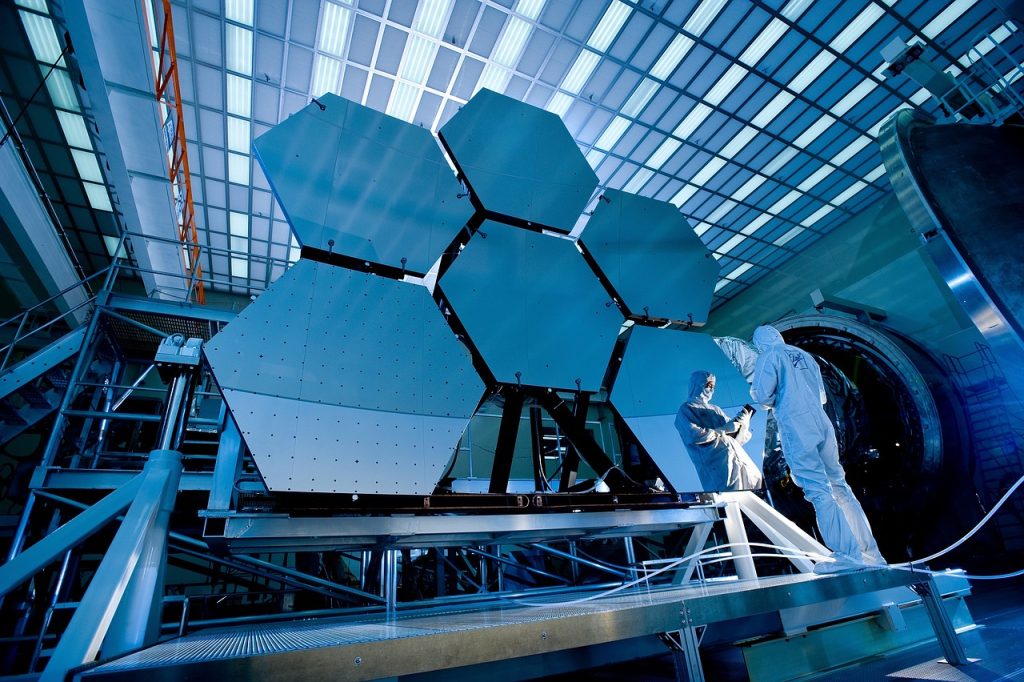The James Webb Space Telescope
Tags: hubble, hubble telescope, james webb telescope, jemes webb, space, space telescope

The James Webb Space Telescope (JWST) is a large space telescope that is currently under development by NASA, with contributions from the European Space Agency (ESA) and the Canadian Space Agency (CSA). The JWST is named after James E. Webb, who served as the second administrator of NASA from 1961 to 1968 and played a key role in the Apollo program.
The JWST is designed to be the successor to the Hubble Space Telescope, and will have a much larger mirror and a more advanced suite of scientific instruments. It is expected to be launched in March 2021, although there have been several delays in its development.
The telescope has a primary mirror that is 6.5 meters (21.3 feet) in diameter, which is over twice the size of the Hubble’s primary mirror. The mirror is made up of 18 hexagonal segments that will work together to collect light from distant galaxies and stars. The telescope will be positioned at a distance of around 1.5 million kilometers (nearly 1 million miles) from Earth, at the second Lagrange point (L2).
The JWST is designed to observe the universe in the infrared part of the electromagnetic spectrum, which will allow it to study the earliest galaxies in the universe, observe the formation of stars and planetary systems, and study the atmospheres of exoplanets. The telescope will be equipped with four main scientific instruments: the Near Infrared Camera (NIRCam), the Near Infrared Spectrograph (NIRSpec), the Mid-Infrared Instrument (MIRI), and the Fine Guidance Sensor/Near InfraRed Imager and Slitless Spectrograph (FGS/NIRISS).
The development of the JWST has been a major international effort, with contributions from over 1,000 scientists and engineers from 14 different countries. The project has faced several technical and budgetary challenges, and its development has been delayed by several years. However, it is expected to be a major breakthrough in the field of astronomy and to provide unprecedented views of the universe.
The JWST is designed to be much more powerful than the Hubble Space Telescope, and will be able to study the universe in much greater detail. It will be able to observe the first galaxies that formed after the Big Bang, and will be able to see much further back in time than the Hubble. This will give scientists a better understanding of the early universe and how it has evolved over time.
The JWST will also be able to study exoplanets, which are planets outside our solar system. It will be able to study their atmospheres and determine whether they have the right conditions to support life. This is a major goal of the JWST, as it could help scientists answer one of the biggest questions in astronomy: are we alone in the universe?
The telescope is being built by a team of scientists and engineers from NASA, the European Space Agency (ESA), and the Canadian Space Agency (CSA). The project is being led by NASA’s Goddard Space Flight Center in Maryland, USA. The telescope has been in development for over 20 years, and its total cost is estimated to be around $10 billion.
The launch of the JWST has been delayed several times due to technical and budgetary issues. Originally planned for 2007, the launch was first delayed to 2014, then to 2018, and finally to 2021. Despite the delays, the telescope is expected to be a major breakthrough in astronomy and to provide a wealth of new scientific knowledge about the universe.
Once the telescope is launched, it will be operated by a team of scientists and engineers on the ground. The telescope will be located at the second Lagrange point (L2), which is a point in space that is located about 1.5 million kilometers (nearly 1 million miles) from Earth. From this location, the telescope will have an unobstructed view of the universe and will be able to observe the cosmos in unprecedented detail.
The JWST will use a range of advanced technologies to achieve its goals. For example, its primary mirror is made from lightweight beryllium, which is stronger and more stable than the glass used in the Hubble Space Telescope. The mirror is coated with a layer of gold, which will help it to reflect infrared light more effectively.
The telescope’s instruments are also highly advanced. For example, the Near Infrared Camera (NIRCam) will be able to detect the light from the first galaxies that formed after the Big Bang, thanks to its ability to observe in the near-infrared spectrum. The Near Infrared Spectrograph (NIRSpec) will be able to analyze the light from these galaxies in even greater detail, allowing scientists to learn more about their composition and structure.
The Mid-Infrared Instrument (MIRI) will allow the JWST to study exoplanets in detail. It will be able to detect the heat emitted by these planets, which will help scientists to determine their temperature, composition, and atmospheric conditions. This information could be used to determine whether an exoplanet is habitable, and whether it has the right conditions to support life.
The Fine Guidance Sensor/Near InfraRed Imager and Slitless Spectrograph (FGS/NIRISS) will be used to help the telescope to navigate in space. It will be able to locate and track distant stars with great precision, which will help the telescope to remain pointed accurately at its targets.
The JWST will be launched on an Ariane 5 rocket, which will take it into space from the European Spaceport in French Guiana. Once it is in orbit, it will begin a series of tests to ensure that its instruments are working properly. It will then begin its mission to study the universe in unprecedented detail.
The JWST is expected to operate for at least 10 years, although it could potentially continue to function for much longer. During this time, it will provide scientists with a wealth of new data about the universe, which could help to answer some of the biggest questions in astronomy.